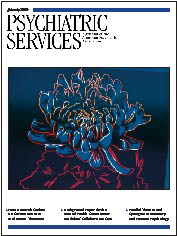Recovery and Positive Psychology: Parallel Themes and Potential Synergies
Abstract
The positive psychology movement studies the sources of human strength and the foundations of the "good life." Like the recovery movement, it focuses on personal fulfillment and well-being more than on mental illness. These movements have followed separate but parallel tracks. Positive psychology has traveled an academic and empirical path and the recovery movement has followed a grassroots advocacy model. The authors describe the successful use of the Values in Action Inventory of Strengths in a Department of Veterans Affairs psychiatric rehabilitation program. They argue for the integration of positive psychology and the recovery movement: positive psychology provides a potentially useful framework for further defining and fostering the goals of recovery, and the recovery movement can expand the hitherto limited application of positive psychology.



